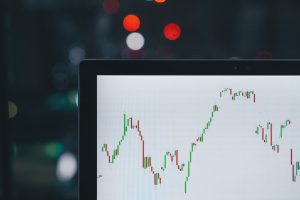Forex trading is a dynamic and ever-changing market that demands a great deal of attention and analysis to identify long-term trends. Forex traders often use technical analysis tools and indicators to identify long-term trends as it helps them make informed decisions about the market. A long-term trend is a direction in which the market is moving for a longer period. It is essential to identify long-term trends as they help traders make better trading decisions, such as determining entry and exit points, setting stop-losses, and identifying potential profit targets.
Here are some of the ways to identify long-term forex trends:
1. Use Moving Averages
Moving averages are one of the most commonly used technical analysis tools to identify long-term trends. It is a trend-following indicator that smooths out the price data by calculating the average price over a specific period. Traders use moving averages of different time periods, such as 50-day, 100-day, or 200-day moving averages, to identify long-term trends. When the price is above the moving average, it indicates an uptrend, and when the price is below the moving average, it indicates a downtrend.
2. Identify Support and Resistance levels
Support and resistance levels are essential tools to identify long-term trends. Support levels are the price levels where buying activity is strong enough to prevent the price from falling further. Resistance levels are the price levels where selling activity is strong enough to prevent the price from rising further. Traders use these levels to identify long-term trends. If the price breaks above a resistance level, it is a signal of an uptrend, and if it breaks below a support level, it indicates a downtrend.
3. Use Trend Lines
Trend lines are another technical analysis tool used to identify long-term trends. A trend line is a straight line that connects two or more price points on a chart. Traders use trend lines to identify the direction of the trend. An uptrend is identified by drawing a line connecting the higher lows, and a downtrend is identified by drawing a line connecting the lower highs.
4. Use Relative Strength Index (RSI)
Relative Strength Index (RSI) is a momentum indicator that measures the strength of the trend. Traders use RSI to identify long-term trends by analyzing the overbought and oversold conditions. If the RSI is above 70, it indicates that the market is overbought, and if it is below 30, it indicates that the market is oversold. An overbought market may indicate that the trend is about to reverse, and an oversold market may indicate that the trend is about to start.
5. Use Moving Average Convergence Divergence (MACD)
Moving Average Convergence Divergence (MACD) is another momentum indicator that measures the difference between two moving averages. Traders use MACD to identify long-term trends by analyzing the crossovers of the moving averages. If the MACD line crosses above the signal line, it is a signal of an uptrend, and if it crosses below the signal line, it indicates a downtrend.
In conclusion, identifying long-term trends is essential for forex traders as it helps them make better trading decisions. Traders can use various technical analysis tools such as moving averages, support and resistance levels, trend lines, RSI, and MACD to identify long-term trends. However, it is important to note that no single indicator or tool can guarantee the accuracy of identifying long-term trends. Traders must analyze the market using multiple tools and indicators to make informed trading decisions.





